CLICK ON IMAGES TO ENLARGE. REPEAT IF REQUIRED. THE PAIRED ONES ACCESS THE GALLERY WHICH CAN BE VIEWED FULL SIZE.
Today being a rainy one, I scanned another dozen colour slides from my Streets of London series. These are from July 2004. I tramped these streets so often that I don’t know whether these were all produced in one day during the summer of my 62nd birthday, but it is quite possible. This lengthy post quotes extensively from the internet, so readers may choose either to read or to skip the further information included.
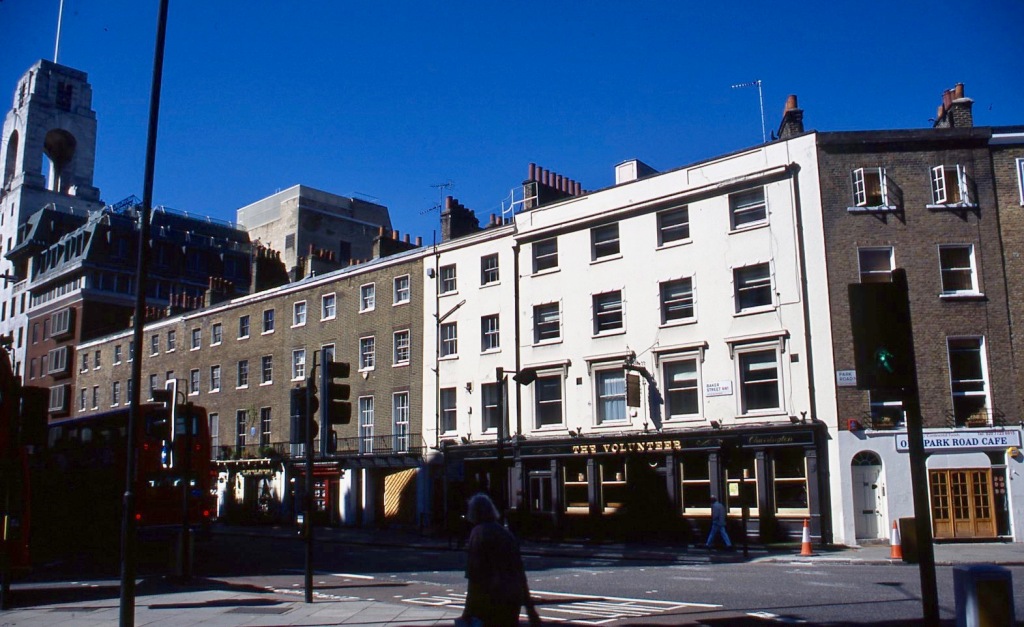

Park Road NW1 runs off Baker Street to Regents Park. Situated next door to the Sherlock Holmes Museum, The Volunteer public house is so named because it was a recruiting station during World War 1.
Allsop Place NW1, lies around the corner from the Marylebone Road entrance to Baker Street Station. Can you spot Sherlock Holmes?
Dating from 1989 the Storm range of watches is rather younger than the Borough of St Pancras which was abolished in 1965 to become part of the London Borough of Camden.
Fitzroy Street, W1, lies parallel to Tottenham Court Road, equidistant between Warren Street and Goodge Street underground stations. Many streets of the capital are lined with London Plane trees, the leaves of one of which almost obscures the sign.
This shot is taken from the corner of Bidborough Street and Judd Street WC1 giving a view across Euston Road of the luxurious St Pancras Renaissance Hotel and the British Library. The scaffolding shows that the prolific Victorian Gothic revival architect Sir George Gilbert Scott’s magnificent hotel was, in 2004, undergoing extensive refurbishment. I suppose, at least in its materials and their colours, Sir Colin St John Wilson, intended the library to blend in with its more elaborate neighbour.
Coram Street, WC1 is named after “Captain Thomas Coram (c. 1668 – 29 March 1751) [who] was a philanthropist who created the London Foundling Hospital in Lamb’s Conduit Fields, Bloomsbury to look after abandoned children. It is said to be the world’s first incorporated charity.” (Wikipedia) I first ventured into the Foundling Museum (https://en.wikipedia.org/wiki/Foundling_Museum) in Brunswick Square when, as an Assistant Child Care Officer in 1967, I attended a London Boroughs Training course there. I spent much of my time gazing at the art works on the walls. Little did I then know that in the 1990s I would chair a committee bringing together The Stepping Stone Community and The Thomas Coram Foundation.
This is what Wikipedia tells us about The Horse Hospital:
“The Horse Hospital is a Grade II listed[1] not for profit, independent arts venue in central London, England, with a curatorial focus on counter-cultural histories, sub-cultures and outsider as well as emerging artists delivered through frequent events, underground film and artist’s moving image screenings, and exhibitions.[2] Founded in 1992 by Roger K. Burton,[3] the venue opened with Vive Le Punk! a retrospective of Vivienne Westwood‘s punk designs in 1993.
Initially programmed by Burton and Ian White, the venue’s reputation grew both in London and abroad. James B. L. Hollands later replaced White as curator. The artist, Tai Shani has been the programmer since 2006.
In 1998, the Horse Hospital hosted the debut British exhibition by outsider artist / painter Joe Coleman which attracted a new audience. Subsequently the venue played host to a variety of performers, musicians, artists, film makers and writers, including Dame Darcy, Anita Pallenberg, Iain Aitch, Jack Sargeant, Valie Export, Chris Carter, David Tibet, Helen Chadwick, Dennis Cooper, Morton Bartlett, Lydia Lunch, Bruce Bickford, Gee Vaucher and Crass, Alejandro Jodorowsky, Stewart Home, Jeremy Reed and others.
It has also been used by various record labels, publishing houses including Soft Skull Press, Verso, Serpent’s Tail and Clear Cut Press. and journals such as Strange Attractor and Granta for special events, as well as a screening space for numerous film festivals including the Fashion in Film Festival, and London International Animation Festival amongst others.
Built originally by James Burton in 1797 as stabling for cab drivers’ sick horses, the Horse Hospital is notable for its unique stone tiled floor. Access to both floors is by concrete moulded ramps, the upper floor ramp retains hardwood slats preventing the horses from slipping. It can be found at Colonnade, Bloomsbury, London.
In 2015 The Horse Hospital was listed with London Borough of Camden as a Community Asset and the site was selected for inclusion in the British Library’s UK Web Archive as a website of cultural importance.
The Horse Hospital also houses and is supported by the ‘Contemporary Wardrobe Collection’, a fashion archive that specialises in post-war street fashion, sub-cultures and British design.”
The Friend at Hand was built in 1735.
Just around the corner lis the Celtic Hotel. Tom Meyers, EuroCheapo staff writer gives it top spot:
“The Celtic Hotel is one of our favorite budget hotels in all of Europe. It ticks off the boxes for all of the things we hold dear: lovely proprietors, reasonable rates, clean rooms, and a central location. In short, it’s hard to find anything to complain about (aside from the difficulty of booking a room, given the hotel’s popularity!).
Located just down the block from Russell Square, the Celtic is comprised of three townhouses combined into a hotel, and thus its 35 rooms vary quite significantly in size. However, high ceilings and pastel-toned walls help make even the tiny singles feel a little less cramped. Furnishings are basic and utilitarian, with simple curtains and comforters, but there are a few details (like framed floral prints and cute lamps) that increase the charm quotient.
Amenities are sparse, but all rooms offer free Wi-Fi and TV. The bathroom situation depends on which type of room you book: The most basic (and cheapest) singles and doubles share toilets and showers, although all are equipped with their own in-room sinks. The most expensive rooms have private bathrooms, while there are also middle-of-the-road rooms that have either only a shower or only a toilet.
Whatever the configuration, the bathrooms are spotless and there are plenty of shared facilities to go around. The especially modest should note, however, that the “shower-no-toilet” rooms have free-standing showers—with no separate door.
Additionally, the Celtic offers one small apartment in the basement that sleeps up to four. It’s a homey space with an old fireplace, one double bed, two twins and a small kitchenette.
The Hotel Celtic has two spacious lounges, each done up with a mishmash of comfortable furniture and traditional fireplace. One has a television, and both are great for curling up with a book or stroking the resident cat (named “Dog”).
Mr. and Mrs. Marazzi, the Celtic’s very friendly Italian owners, keep the place comfortable and homey. The family is so friendly that when they moved operations (from the St. Margaret’s Hotel, a former EuroCheapo favorite located just a few blocks away), virtually their entire staff wanted to move with them. (Read our Q&A with Mrs. Marazzi here.)
While the Celtic’s rates aren’t the absolute cheapest in London, given its top-notch service and its location bang in the center of town (across the street from Russell Square, and very near the British Museum, Kings Cross Station and the West End), the hotel represents a great value.
Breakfast, included in the room rate, is made to order and served in a light, airy room with mirrored walls.
Note: The hotel does not have an elevator, but three bedrooms are located on the ground floor.”
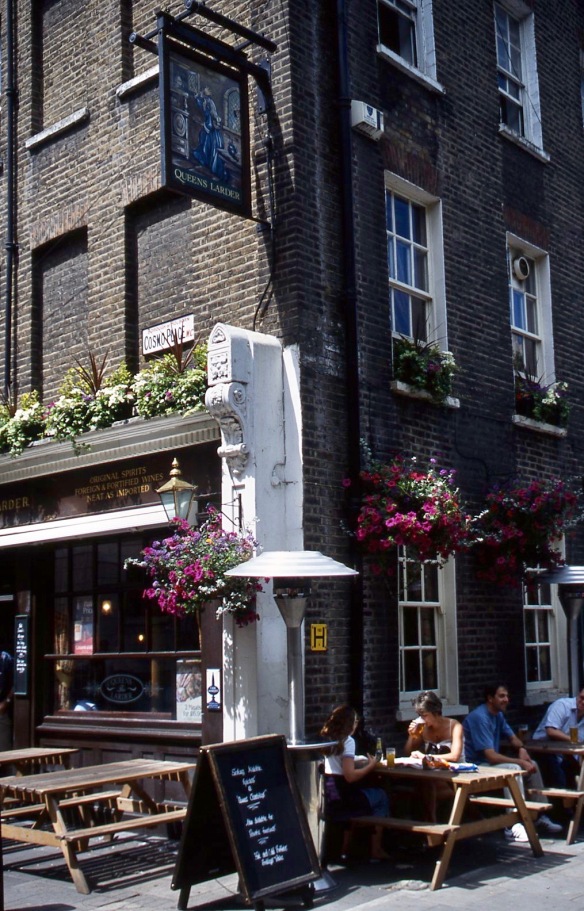
The 18th century ‘Queen’s Larder’, in Cosmo Place WC, according to the publicans “takes its name from Queen Charlotte, wife of the ‘Mad King’ George III, who was receiving treatment for his apparent insanity at a doctor’s house in the square.
The Queen assisted in the nursing of her husband, by cooking for him and rented a small cellar beneath the pub, where she kept special foods for him.”
I have taken the liberty of removing one superfluous apostrophe and inserting another that was missing.
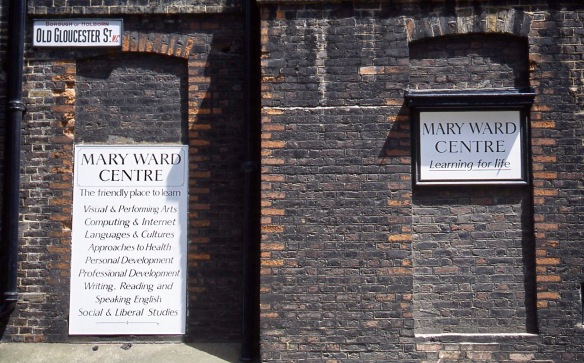
The Mary Ward Centre (https://en.wikipedia.org/wiki/Mary_Ward_Centre) is an adult education centre occupying converted 18th century houses at 42 Queen Square. One of the alternative entrances lies in Old Gloucester Street, WC.
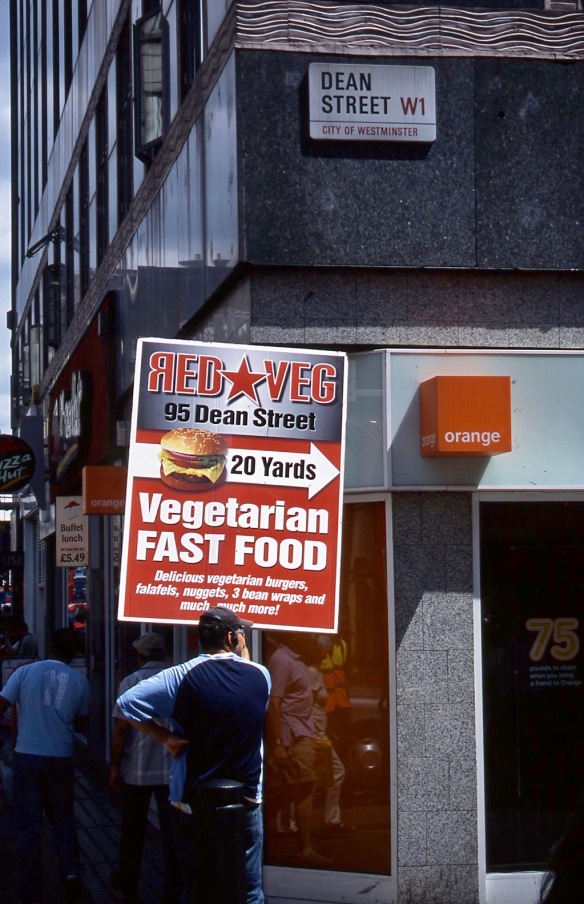
Dean Street, W1 lies in the heart of Soho, a stone’s throw from our flat in Horse and Dolphin Yard in the 1970s. Examples of the modern version of the sandwich board have featured before.
This evening we dined at Lymington’s Lal Quilla. My choice of main meal was chicken jaljala; Jackie’s chicken shashlik; we shared Dal Shabji, plain Naan, and special fried rice; and both drank Kingfisher.



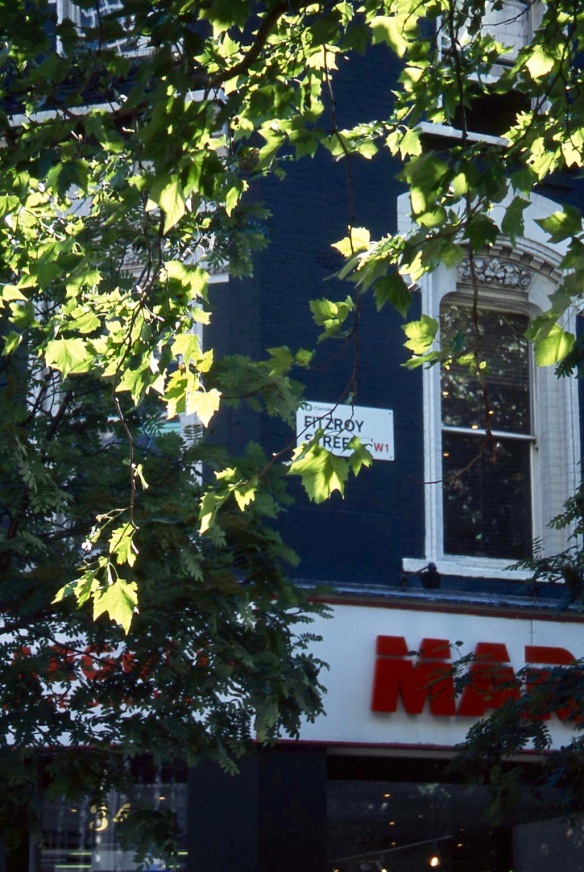
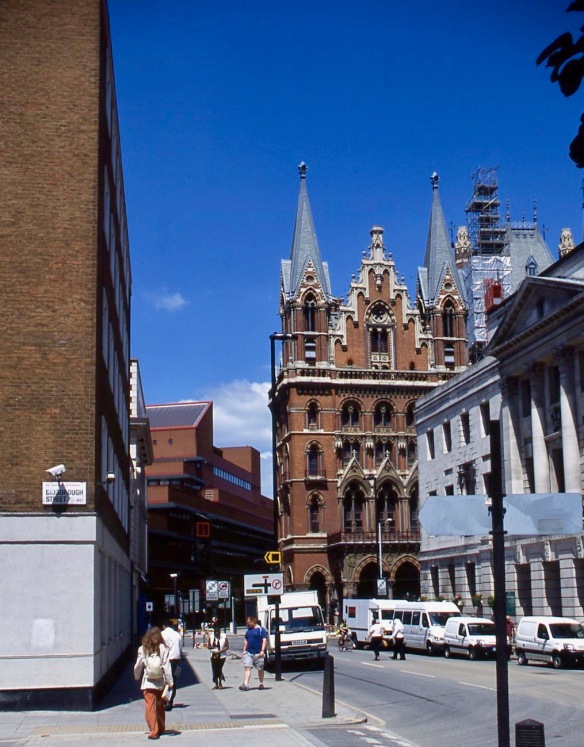

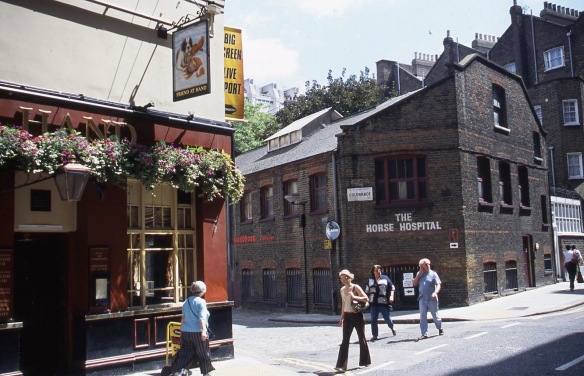

Nice journey in London, I enjoyed reading your blogpost, Derrick. It seems you had a yummy meal ?
Thanks a lot, Louise
Anyone wanting to London then and now should be scanning your blog Derrick – there are some great shots here again and the history is so interesting!
Many thanks, Pauline
‘know’ I missed the word out! ‘Anyone wanting to know London….’ Fingers not keeping up with brain syndrome 🙂
Great time in London. Loved reading this travelogue post. I think, you like spicy Indian food, right? Though Dal-Sabji is comparatively milder… 🙂
Have a look at this one, Maniparna: https://derrickjknight.com/2012/10/31/curry-a-biography/
Being the lover of people watching, you know I love when you hit the streets, Derrick. This post did not disappoint…excellent! And yes, I spotted Sherlock even before I enlarged the photo. 🙂
Many thanks, Jill. Of course, I thought of you.
🙂
With the combination of your narrative and photography, it feels I’ve been there.
That’s good, Jim. Many thanks.
Thank you for the interesting tour, Derrick! I’m glad you explained the origins of the horse hospital name. 🙂
I was intrigued to find out myself, Merril. The internet has its uses. Many thanks.
You always share such interesting facts when speaking about the history of London and other places in the UK. It’s really so nice to read
Very many thanks, Geetha
Welcome Derrick
Coral Street is my favorite.
Thanks a lot, Steve